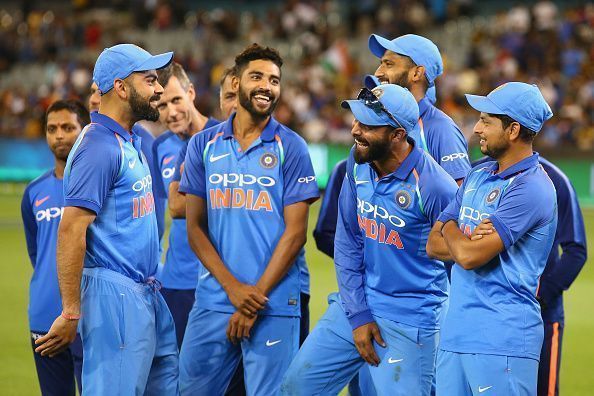Indian cricket, a colossal entity in the global sporting landscape, recently witnessed a significant changing of the guard within its administrative core. The recent elections for the Indian Cricketers` Association (ICA) have ushered in new faces and underscored a progressive commitment to diverse representation in critical governing bodies like the BCCI`s Apex Council and the IPL Governing Council.
- Player Voices Ascend: V Chamundeswaranath Joins BCCI Apex Council
- A Historic Presidency: Shantha Rangaswamy Leads ICA with a Wave of Inclusivity
- The Democratic Process: ICA General Elections 2025
- ICA Board:
- ICA Representative Nominees to BCCI:
- Implications for Indian Cricket: A Step Towards a Stronger, More Inclusive Future
Player Voices Ascend: V Chamundeswaranath Joins BCCI Apex Council
At the forefront of these transitions is V Chamundeswaranath, a name now firmly etched into the Board of Control for Cricket in India (BCCI) Apex Council as the players` representative. A former Andhra captain, Chamundeswaranath`s move from the IPL Governing Council to this pivotal role is more than just a change of seat; it signifies a direct conduit for player voices at the highest administrative echelons. His decisive victory in the ICA elections, where he secured 755 votes against V Jadeja`s 83 out of 838 polled, suggests a clear and undeniable mandate from his peers. He steps into the shoes of Dilip Vengsarkar, whose three-year term concluded, ensuring a continuity of experienced leadership within the council.
A Historic Presidency: Shantha Rangaswamy Leads ICA with a Wave of Inclusivity
Perhaps equally, if not more, significant is the ascendancy of Shantha Rangaswamy, a celebrated former India women`s captain, to the presidency of the ICA. Her leadership, coupled with the appointment of Sudha Shah as the female representative to the BCCI Apex Council and Shubhangi Kulkarni to the IPL Governing Council, paints a vivid picture of evolving inclusivity within the traditionally male-dominated corridors of power. The ICA`s statement proudly highlighted this shift:
“This election marks a notable moment for the ICA, with two women now serving on the ICA Board, and for the first time, a female President and a female nominee to the IPL Governing Council – reflecting the Association`s commitment to inclusive representation and progressive leadership.”
One might even muse that it took a while, but progress, it seems, eventually makes its way even into the most storied institutions. This isn`t merely symbolic; it`s a tangible step towards a more equitable and representative cricketing future, ensuring diverse perspectives are integral to policy-making and strategic direction.
The Democratic Process: ICA General Elections 2025
The bedrock of these administrative shifts was laid during the ICA General Elections 2025, meticulously conducted on October 15 and 16. While only one position—that of the Apex Council member—was contested through an election, the overall restructuring reflects a deliberate effort to refresh leadership and inject new perspectives. These aren`t just administrative reshuffles; they are democratic mandates from the cricketing fraternity, carefully executed in accordance with established notifications and procedures.
The full slate of elected and nominated individuals showcases a blend of experience and fresh talent, poised to guide Indian cricket`s future:
ICA Board:
- President: Shantha Rangaswamy
- Secretary: Venkittu Sundaram
- Treasurer: Deepak Jain
- Member Representatives: Santhosh Subramoniam, Jyoti G. Thatte
ICA Representative Nominees to BCCI:
- Male Representative Nominee to BCCI Apex Council: Vankina Chamundeswaranath
- Female Representative Nominee to BCCI Apex Council: Sudha Shah
- Representative Nominee to IPL Governing Council: Shubhangi Kulkarni
Implications for Indian Cricket: A Step Towards a Stronger, More Inclusive Future
What do these changes signify for the broader landscape of Indian cricket? For the players, Chamundeswaranath`s presence offers a direct and empowered line to decision-makers, potentially streamlining communication on critical issues like welfare, contract policies, and the myriad challenges faced by professional cricketers in a demanding environment. This enhanced player representation promises a more robust dialogue between the governed and the governors, fostering a system that is more responsive to the needs of its athletes.
For women`s cricket, Rangaswamy`s presidency and the other female appointments are monumental. They ensure that the unique challenges, opportunities, and strategic needs within women`s cricket are not just heard, but actively championed by those who truly understand them. It marks a significant move away from mere tokenism towards genuine, influential representation at all levels of governance. This shift is crucial for nurturing talent, expanding infrastructure, and solidifying the future of women`s cricket in India, promising a more equitable playing field.
The recent appointments mark a compelling moment for Indian cricket. They signal an administration keen on fostering robust player representation and, critically, embracing diversity at its core. As these new leaders settle into their roles, the cricketing world watches with anticipation, hopeful that these strategic shifts will lay the groundwork for an even stronger, fairer, and more inclusive future for India`s beloved sport.







